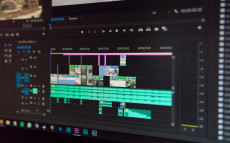- pathfindersAI
- Job Profile
Desktop Publishers
Summary
The Role and Responsibilities of Desktop Publishers: A Career Exploration
What They Do
Desktop Publishers are specialized professionals who use computer software to create visually appealing publications and marketing materials. Their work plays a crucial role in a variety of industries, ranging from advertising agencies to corporate communications departments. Desktop Publishers design and produce layouts for books, magazines, newspapers, brochures, and other print and digital media. Their expertise in graphic design, layout, and typographic principles enables them to transform text and images into cohesive, engaging formats that effectively communicate the intended message to an audience.
Job Responsibilities
The responsibilities of a Desktop Publisher are diverse and require a deep blend of artistic creativity and technical proficiency. Daily tasks typically include designing page layouts, choosing appropriate fonts, selecting colors, and incorporating images and illustrations. They must ensure that the final products meet the specifications provided by clients or supervisors. This includes proofreading for errors, formatting documents to fit specified dimensions, and preparing files for printing or digital publishing. Desktop Publishers often work closely with writers, editors, graphic designers, and print vendors to reach a harmonious and polished outcome. They might also be involved in updating and maintaining company websites and creating multimedia content.
Essential Skills
To excel as a Desktop Publisher, one must possess a unique combination of artistic vision and technical skill. Proficiency in industry-standard software such as Adobe InDesign, Photoshop, Illustrator, and Acrobat is paramount. An eye for detail and a solid understanding of graphic design principles, including color theory, typography, and layout, are equally essential. Strong organizational abilities, time management skills, and the capacity to handle multiple projects simultaneously under tight deadlines are crucial in this role. Additionally, excellent communication skills are necessary to collaborate effectively with team members and clients, ensuring that the final product aligns with their vision and requirements.
Educational Pathways
Aspiring Desktop Publishers typically begin their journey with a focus on graphic design, multimedia studies, or a related field. Many pursue an associate or bachelor's degree in graphic design or desktop publishing. College coursework often includes classes in design principles, computer graphics, digital imaging, typography, and layout techniques. Internships and hands-on projects can provide valuable practical experience. Certifications in specific design software, such as those offered by Adobe, can further enhance a candidate’s credentials and marketability. Continuous learning and staying updated with the latest design trends and software advancements are essential for long-term success in this dynamic field.
Career Prospects
The career prospects for Desktop Publishers are promising, with opportunities available across many sectors. In addition to traditional publishing houses, advertising agencies, and print shops, Desktop Publishers can find employment in corporate marketing departments, educational institutions, non-profit organizations, and government agencies. As digital media continues to expand, many Desktop Publishers are branching out into web design, content creation, and social media branding. Freelancing is also a viable option, allowing professionals to work on a variety of projects and with diverse clients. According to the Bureau of Labor Statistics, the median annual wage for Desktop Publishers was $45,390 in May 2020, with top earners exceeding $71,000.
Conclusion
In summary, the role of a Desktop Publisher is multifaceted, requiring a blend of artistic talent and technical know-how. These professionals are essential in the creation of visually compelling printed and digital materials that communicate effectively to target audiences. Through a combination of education, skill development, and practical experience, Desktop Publishers can enjoy a versatile and rewarding career. With the continuing growth of digital media, those who pursue this path can look forward to dynamic opportunities and the satisfaction of contributing to the world of visual communication.
Video
Compensation
| State | Median Salary | Median Hourly | Positions |
|---|---|---|---|
| AL | 36,910 | 17.74 | 50 |
| CA | 68,880 | 33.12 | 540 |
| FL | 53,660 | 25.80 | 190 |
| GA | 55,000 | 26.44 | 180 |
| IL | 47,540 | 22.86 | 150 |
| IN | 47,550 | 22.86 | 150 |
| IA | 39,630 | 19.05 | 60 |
| KY | 38,370 | 18.45 | 90 |
| ME | 44,650 | 21.46 | 40 |
| MD | * | * | 200 |
| MA | 54,800 | 26.34 | 280 |
| MN | 58,750 | 28.24 | 240 |
| NE | 31,880 | 15.33 | 60 |
| NJ | 49,330 | 23.72 | 100 |
| NY | 82,600 | 39.71 | 640 |
| NC | 41,640 | 20.02 | 30 |
| OH | 44,250 | 21.28 | 130 |
| OK | 43,370 | 20.85 | 120 |
| OR | 57,300 | 27.55 | 60 |
| PA | 52,840 | 25.41 | 70 |
| SC | 48,940 | 23.53 | 80 |
| TN | 36,620 | 17.61 | 80 |
| TX | 34,370 | 16.52 | 470 |
| UT | * | * | 60 |
| VA | 58,090 | 27.93 | 160 |
| WA | 60,340 | 29.01 | 70 |
| WI | * | * | 170 |
Similar Occupations
In this area you will find other occupations that are close to the one you were viewing in tasks, knowledge and work environment. If the primary job profile you are viewing isn't quite to your liking, take a look around and see what else is available.
Basic and Premium Accounts have more alternative occupations available than the Free account.

Editors - 27-3041.00
An editor reviews, organizes, and refines written content to ensure it meets quality standards and is clear, accurate, and engaging for the intended audience. They also collaborate with writers, providing feedback and guidance to enhance the overall coherence, structure, and style of the text.
-
$75,020/yr
Median Pay -
95,700
Number of Jobs

Film and Video Editors - 27-4032.00
A Film and Video Editor meticulously assembles recorded footage, applying creative and technical skills to craft a cohesive and compelling final product. They work closely with directors and producers to ensure the visual narrative aligns with the intended vision, making adjustments to pace, transitions, and effects as needed.
-
$66,600/yr
Median Pay -
29,240
Number of Jobs